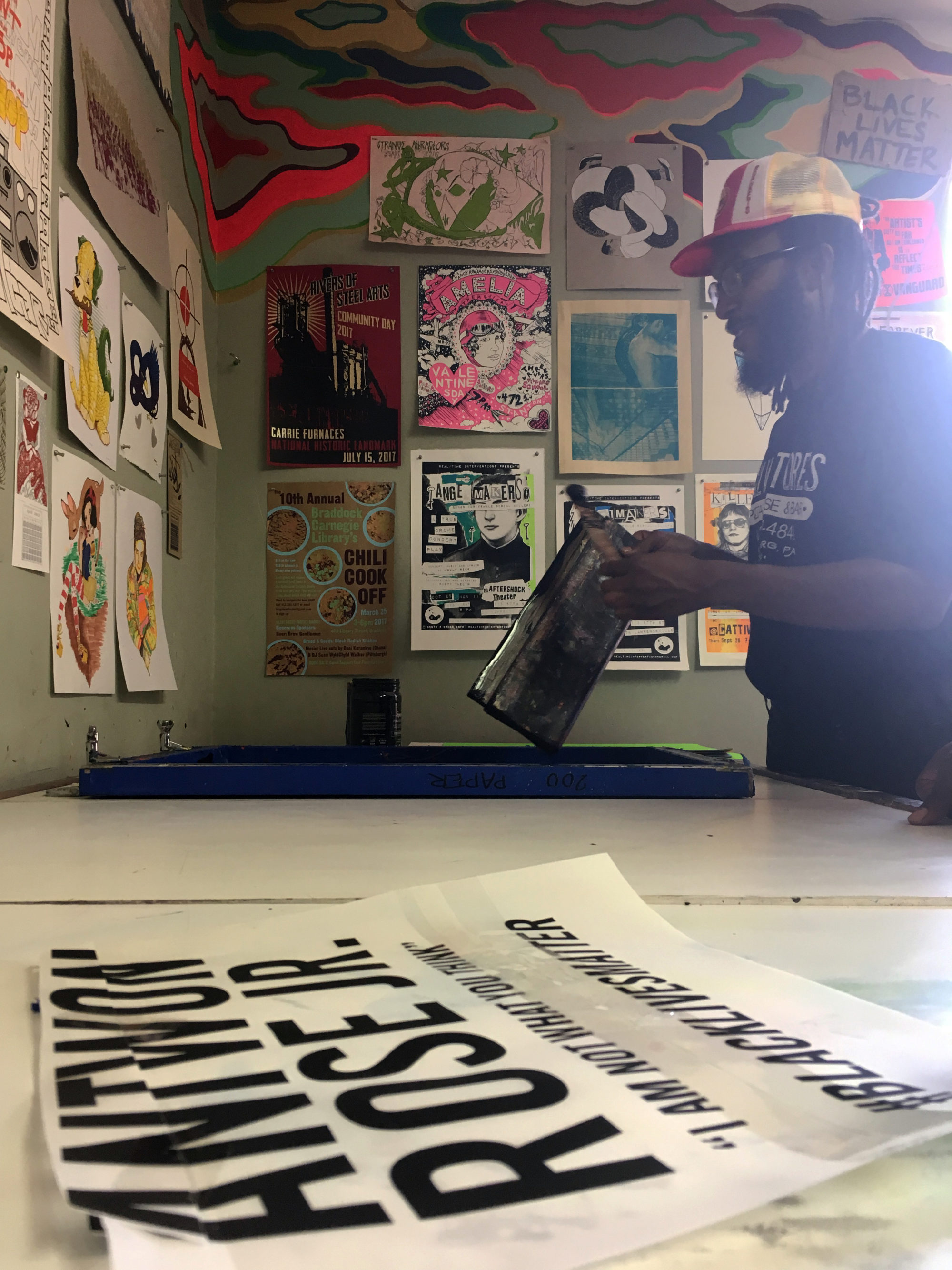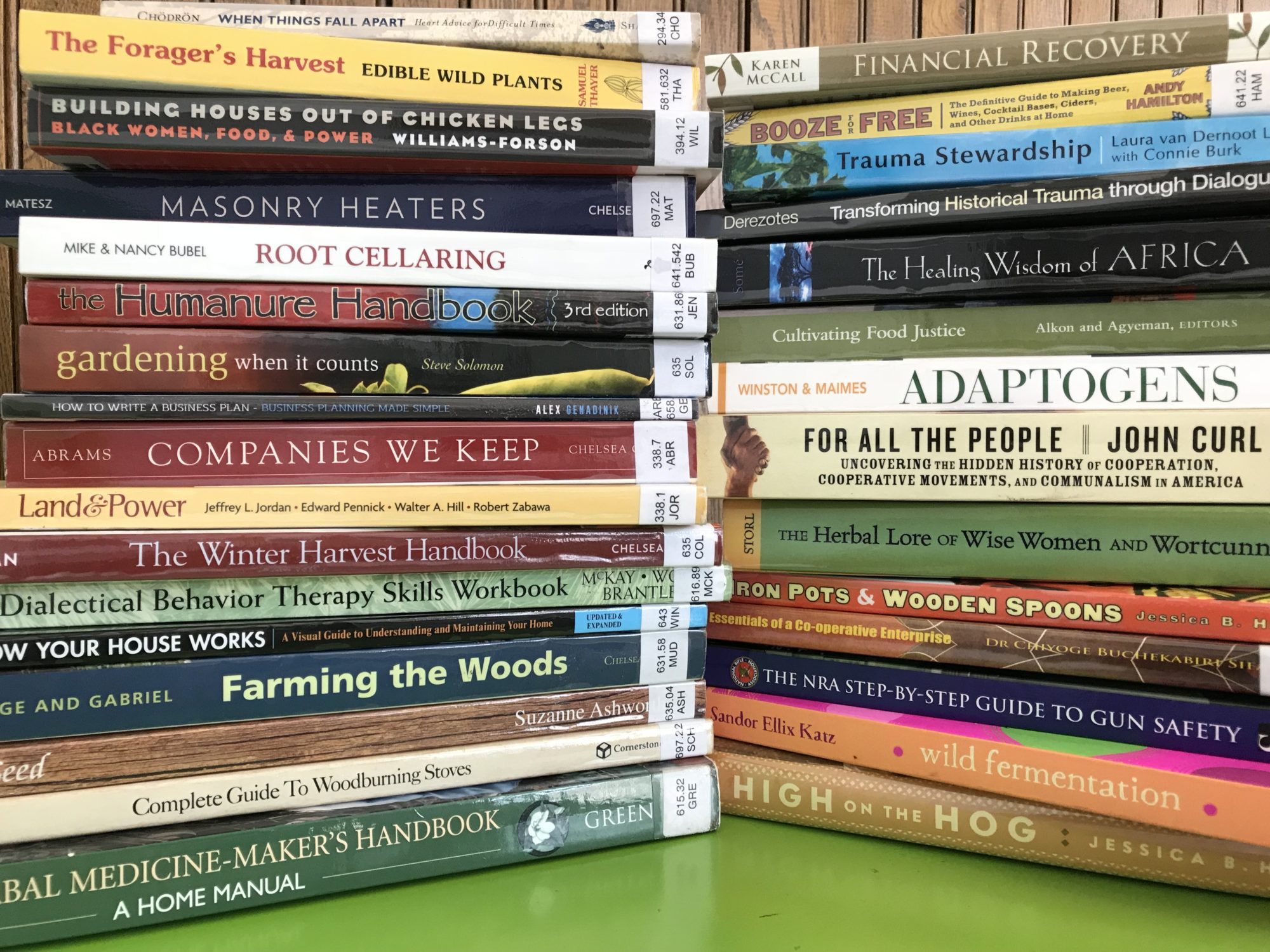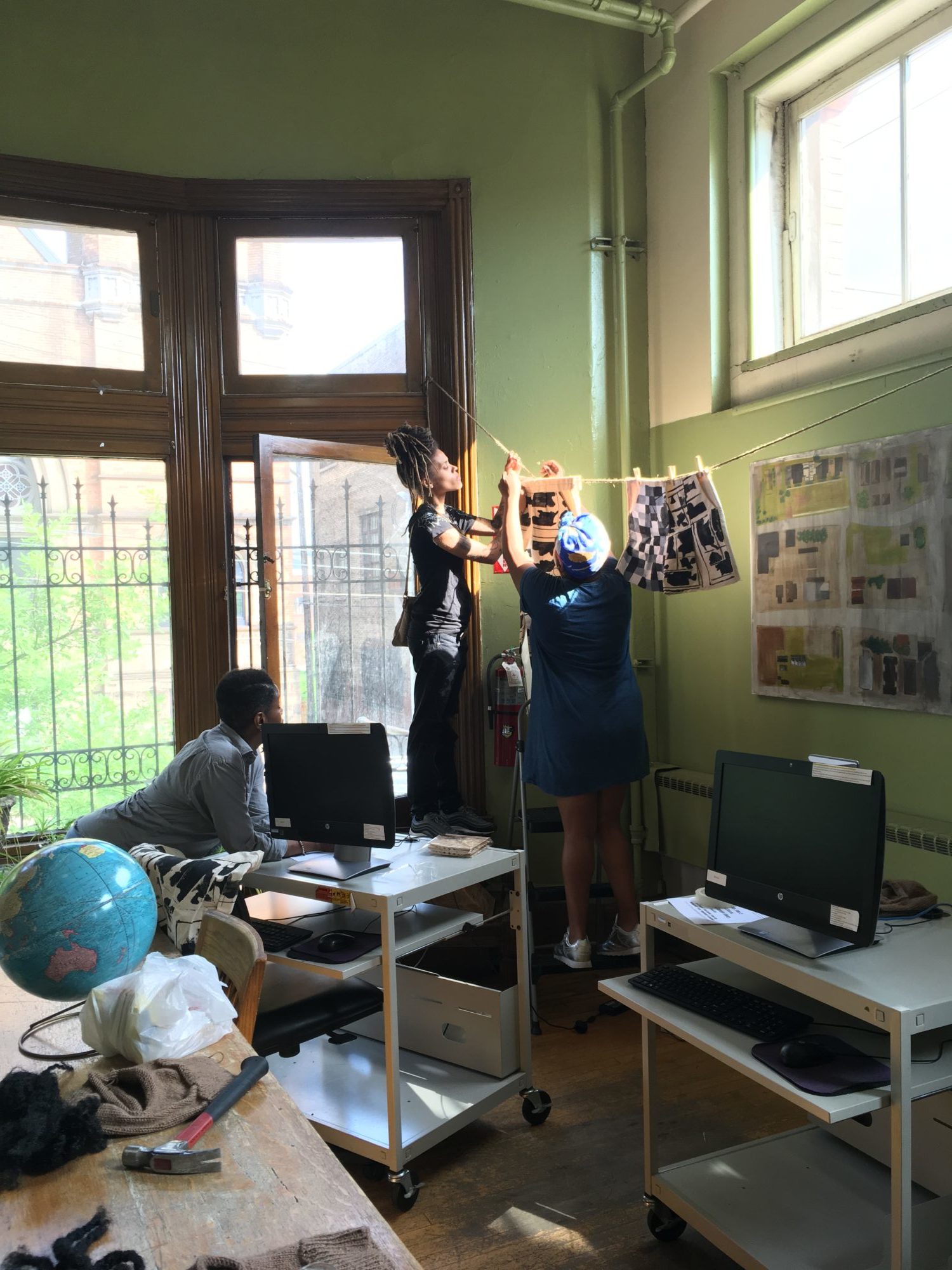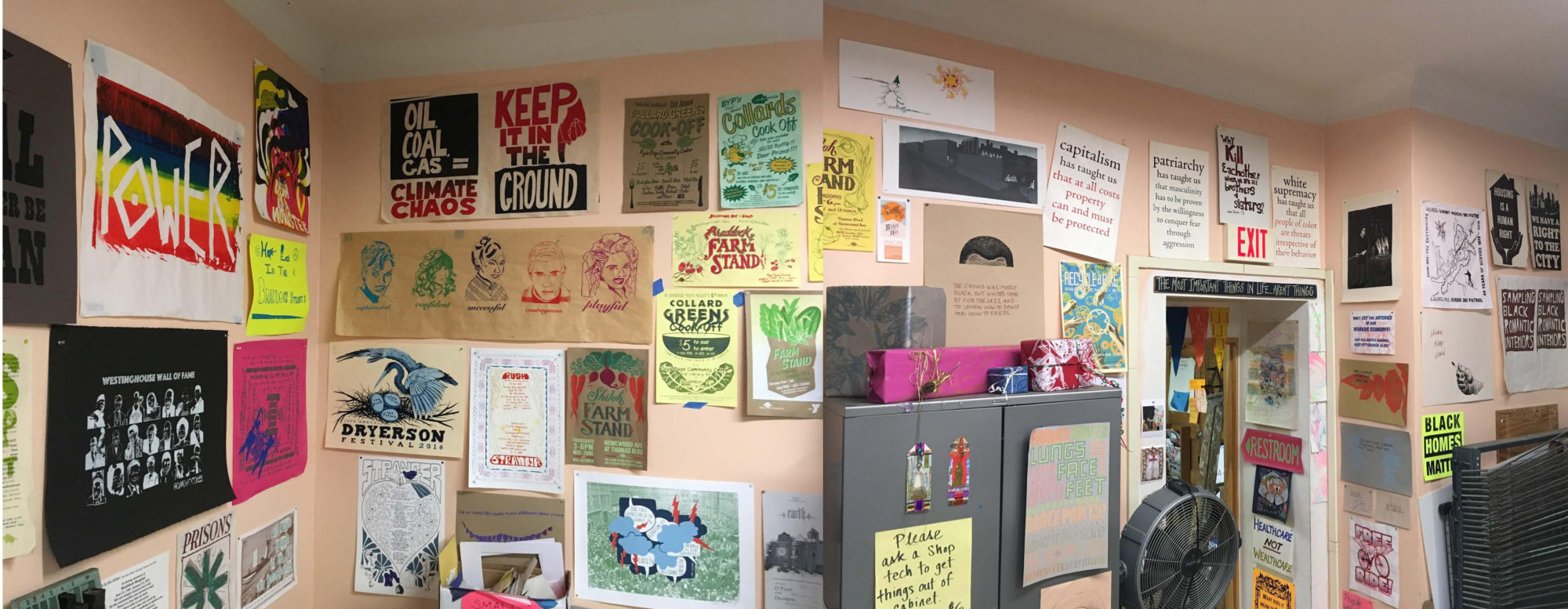Deep Focus
Being a Collection
Making ourselves is the primary creative act that we perform over the course of our lives: deciphering how we have been made by others and how we contribute to the making of others while giving presence to our experiences in the world through the actions of our minds and bodies. Our self is not granted at birth or puberty, and our self is not a thing that stands alone. One’s self has meaning within the collaborative construction of being that we all share. To make one’s self is to make oneself purposefully accessible to others.
For the past ten years, my collaborators and I have been making ourselves together, working inside and in relationship to the Braddock Carnegie Library. In 2009, in collaboration with the library, we opened the Neighborhood Print Shop, a screen-printing and design studio. Since then, we have developed arts programs and worked under various job titles in the library, both as artists exploring forms of administration and service and as administrative and service workers. We have utilized resources and strategies—made available to us through arts networks—to expand options for producing and exchanging knowledge and resources within a small organization with a limited budget and staff. Because we have built upon the fundamental structure of the library, we have been able to enact projects that share its forms of accessibility.

Artist and NPS patron D.S. Kinsel (@dskinsel) printing Justice For Antwon Rose.
A library is a system of tangled, interdependent relations, which preserves within it many individually authored and bound (and influenced and indebted) items. It is not a metaphor for a way we could structure society; it is a way that we do structure it. It is a space for gathering and chance encounter. It is also a model of exchange that allows free borrowing by members, standing in contrast to American capitalism, the dominant economic system that organizes many aspects of our lives (and many people insist that there is no other way). Yet the library model is widely understood and embraced, proving by its existence that other organizational frameworks are happening. It is more aligned with a fundamentally generative state of not-knowing rather than a fixed state of knowing, and it welcomes a public of individuals moving along pathways of discovery, accessible to each other, accessing ideas, constructing ourselves, and creating new knowledge together.

Mike Penn and Leslie Stem, Building Collections. Patron-built collections available for checkout as part of overall collection.
The library is also a collection of material. When a collection is evaluated both by what is in it and what is absent, a possibility emerges: to fill it with more complexity and richness. Our projects aspire to contribute to a collection that is guided by many choosers and a methodology for choosing that holds multiplicity and difference as a goal. Who decides what to include in the collection and what to borrow? How do we decide what is inside the library’s scope and what is outside, and how do we decide what knowledge to place in relationship to our own?
In 2013, we opened the Art Lending Collection, which makes available more than two hundred artworks for borrowing, in the same way that one would check out a book. The project was structured to include multiple choosers to select works, calling attention to the act of choosing and keeping individual subjectivities present within the whole. The initial collection included works by nearly all of the artists in that year’s Carnegie International exhibition and reflected the discourse production of our neighborhood by incorporating three groups of works gifted by library patrons with whom we have had an arts dialogue: James Kidd, Regis Welsh, and Ray Henderson. These collections communicate the diversity of aesthetic perspectives that exist, and have historically existed, in our neighborhood.
We built the project to present a multiplicity of perspectives by creating several permanent, paid positions of Art Lending Facilitators. These arts and culture workers, hired from within the library’s service area, possess knowledge about the histories of our neighborhood and have relationships with artists, curators, and collectors who live here. They pursue individual and collaborative research, assist patrons in selecting artworks, develop arts-related programs, and ensure that the collection remains relevant to the neighborhood by guiding its growth as it acquires new works. Art Lending Facilitators make connections between art worlds and discourses with their multiform knowledge systems, research modes, and experiential contexts of individuals and communities. They offer participating artists access to an expanded audience by presenting their works and providing opportunities to engage people in conversations about the artworks through answering questions and complicating meanings with those who choose to bring the works into their homes.
We continue to work with the library’s collections and archives. We invite artists and library users to survey the existing collection of books with an eye to both what is here and what is missing, and we translate these assessments into installations that take the form of library displays and new collections that highlight the material that is here, as well as the gaps that exist. This way of working—starting with the inherent wealth of a place, insisting on space for multiple voices, and being in relationship to each other, our partners, and our friends—is how we make ourselves together.

Mary Carey, Arts Culture and Information Facilitator, and LaTika Ann, Arts and Culture Facilitator with Sharrell Rushin (@cindynwndrlnd) installing Sharrell’s exhibition as part of our ongoing Artist in the Library series.


